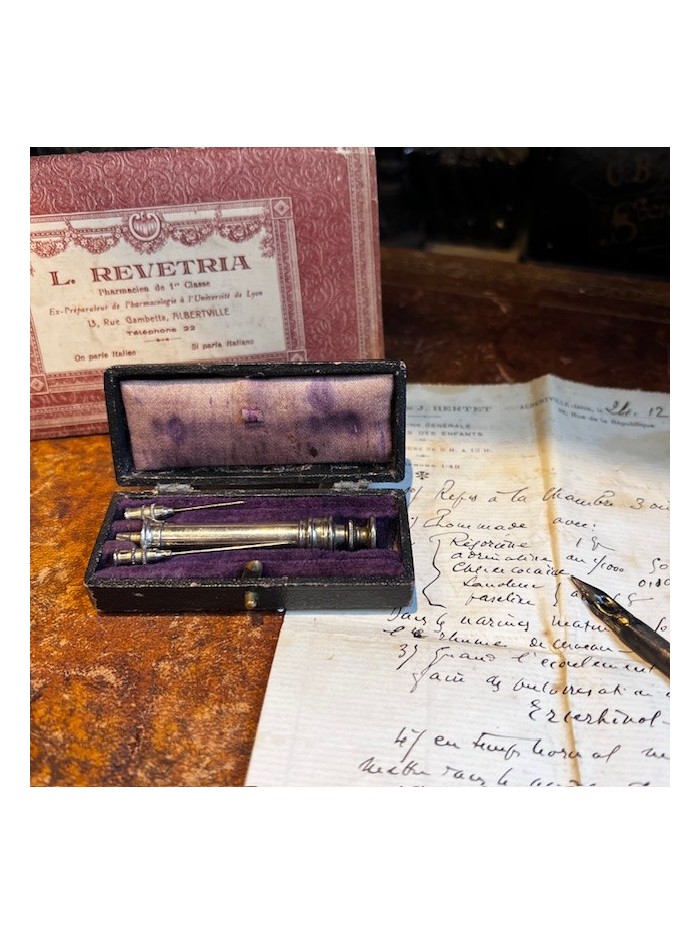- New










Hypodermic Pravaz syringe - 19th century
Metal syringe in it's case
not functional
PRAVAZ syringe: Antique syringe from the end of the 19th century.
Morphine addicts of the end of the XIXth and the beginning of the XXth century often used this kind of elegant syringe in its small case that could be easily slipped into a pocket.
The syringe is all metal, in it's case.
This syringe has a plunger with graduations and a glass body but the tips are not made of metal but seem to be made of celluloid resin, the ancestor of all plastics, manufactured at the end of the 19th century.
A screw step graduated from 0 to 10 allows to adjust its stroke and to measure the quantity of injected liquid.
The syringe is in its small case with felt inside. The compartment for the metal wires that were to be inserted into the needle is behind the felt part of the cover.
Dimensions of the case: 8cmx3cm
Dimensions of the syringe: Length 6.5cm without the needle
not functional
Chlorate de Sodium / Chlorate de Soude
Antique pharmacy bottle
Apothecary vial
Buckthorns syrup
Antique pharmacy bottle
Apothecary vial
Entéropathyl
Antique remedy
Cylindrical cardboard box
EMPTY
Dry sodium iodide
Antique pharmacy bottle - drugstore - apothecary
Strychnos Ignatii - Ignatia
Also known as St Ignatius beans
Strychnine - TOXIC - Old homeopathy bottle - Poison
Codeine iodide
Antique pharmacy bottle - Poison - Toxic
Gum arabic
Antique pharmacy bottle with bakelite cap
Antique pharmacy jar
Liquid Peptone
Raw meat product very fashionable in the first half of the 20th century.
The Anatomy by Heister
Complete with its 14 folding boards at the end of the book
Published in 1735
Sparteine sulphate
Used as a tonic for nervous syndromes at the very beginning of the 20th century, sparteine was also used to facilitate morphine withdrawal.
Antique pharmacy bottle
Apothecary vial
Some product left inside
19th century pharmacy display blue jar
Blown glass
Antique bezoar - Antipoison - Antidote
Once sold by the apothecary, bezoar, also known as gallstone, was reputed to have the same anti-poison properties as the legendary unicorn's horn, hence its excessively high price, also due to its great rarity.
An important piece in a cabinet of curiosities
Sold alone - Without stand, sold separately
Abrégé de l'histoire des plantes usuelles - 1782 - By Chomel
Summary of the history of common plants
Antique pharmacy jar: Lignum Quillayae Saponaria - Panama wood - 19th century
Camphor
Antique pharmacy bottle - End of XIXth century
Blown glass
Clef de Garengeot - Dental key - German key
Marked WAHL Nancy
In use from the 19th century to the 1930s

Hypodermic Pravaz syringe - 19th century
Metal syringe in it's case
not functional









